Tosh Berman's Blog, page 232
April 20, 2014
April 20, 2014

April 20, 2014
It has been a frustrating week. Yet, I was thrilled to get a beautiful gift from a friend of mine in Colorado. She sent me some flowers, and not only that, but my favorite species of flower, the Colorado Blue Columbine. I went to high school in that area of the world, and the one thing that stood out for me was seeing these flowers grow naturally around the area. I almost have a manic need to have them around me as much as possible. So I was very grateful to obtain this special delivery yesterday. Right now, I’m playing Billie Holiday’s “Strange Fruit, ” and trying to make plans to visit Germania, one of my all-time favorite cities in Europe. Some years back, I was invited to give a talk on a panel regarding urban planning of that city, and it always been a point of interest for me, because it seems most cities are planned as they are happening, not as something to look forward to in the future.

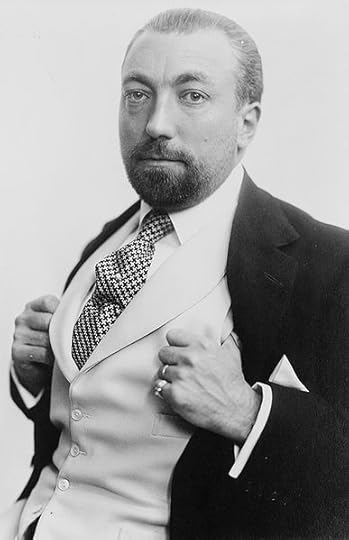
It was proposed to have a large clock in the downtown area of Germania, where as a tribute to the cinema arts, there would have been a statue attached to the clock of a man dangling on one of the clock hands. Unmistakably a tribute to Harold Lloyd. The plan never came to fruition, due that there were fears that people may have mistaken this as an actual person on the clock, either stuck there or about to commit suicide. I tried very hard to convince the city government to follow through the tribute to Lloyd, but I was cut off by the committee at the time. Nevertheless I did arrange a retrospective of Paul Poiret’s clothing in Germania. He was recognized as the Picasso of fashion, during the turn-of-the-century. He basically freed women from restrictive clothing, but like all good things, it had to end sadly. He lost his business, and died pretty much broke. He was married for many years, and his wife was his main muse. Nevertheless, that relationship turned very sour, and he never recovered from the divorce nor got his reputation back again. One can see it now as him being Warhol, and his wife as Edie Sedgwick.
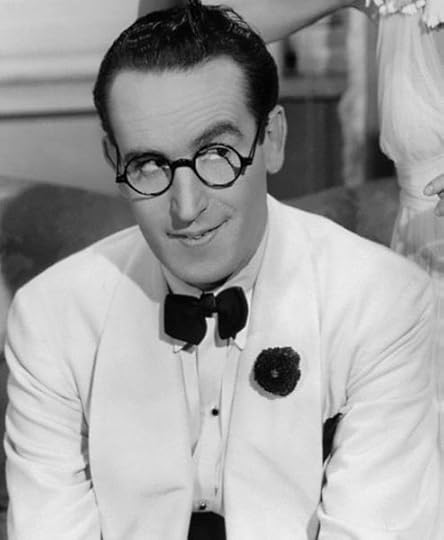
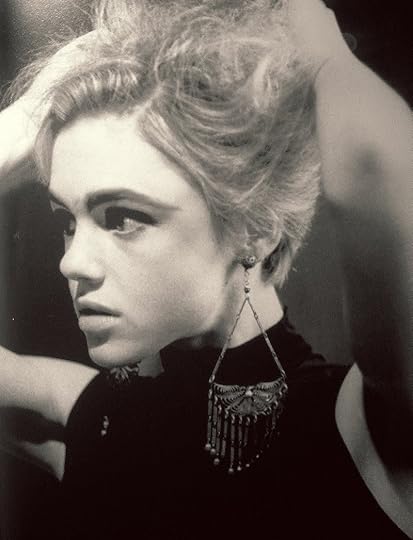
I have had sentimental thoughts regarding Germania, ever since my 50th birthday party there, organized by the Government cultural committee. Due to my interest in culture, I have brought numerous exhibitions and events to that city, and I guess this was their way to honor me as well as saying thank you. The gifts they gave me were border-line kitsch, but on the other hand, I appreciated their gesture and goodwill towards me. So yes, this past week has been difficult on many counts, but still, I look forward to the week ahead. Also since April is my favorite month, I am listening to April March's recordings throughout the day. I think there will be a change in the weather.
Published on April 20, 2014 09:43
April 19, 2014
April 19, 2014
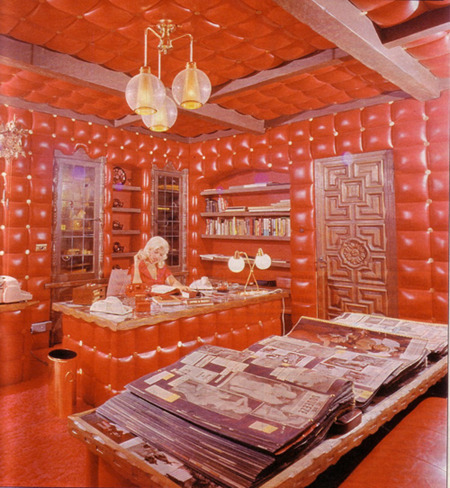
April 19, 2014
As a child, I lived not that far away from the legendary and iconic “pink” residence of Jayne Mansfield. The thing is, even though close to my home, I never seen the place. I have read about it, and people around me talked about it, but actually seeing the home never happened for me. I also believe the house was right on Sunset Boulevard. Where I must have passed numerous times, but I have no recollection of seeing the place. Now come to think of it Jayne Mansfield, herself was like a phantom figure through out my childhood.
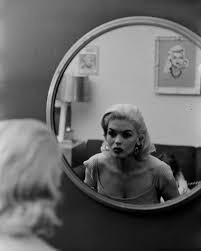
I used to have dreams about her when I was a child, which was strange, because I knew who she was, mostly through looking at movie magazines at the time. There were quite a few publications in the local market, so while my parents were shopping, I would dip into the world of fantasy, knowing very well, that is what it was. I knew the difference between the life in front of me, and the life projected on a huge screen or on my portable black and white TV set. I think throughout my knowledge of Jayne Mansfield, I thought of her as a fictional character, which is probably why I didn’t ever see the pink palace. I probably thought it was a made-up location, and often people used Sunset Boulevard as an address, but nothing exists there. For example, “77 Sunset Strip” is not a real address. I knew that, so I just presumed that Mansfield and her pink palace were just the work of those whose job was to make illusions.
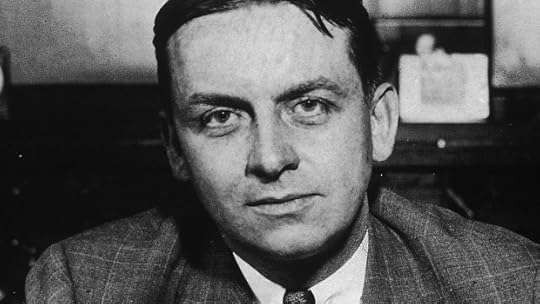
I was shocked one day when someone told me that Eliot Ness actually existed, where for sure I could just swore that he was a fictional character on the great TV show “The Untouchables.” At the time it never dawned on me that the show was based on a true story with real characters from the rolling 20s. I lived a life that had a hard time telling what was illusion and what was true. For instance I always admired the westerns I saw on TV, especially Wyatt Earp. It was a shock to me that all cowboys were not dandies! So, it was a weird position to be a part of life, where one had to decide what was real or not real. As you can gather, I kept getting the names and stories mixed up. To me, Mansfield living in a pink palace seemed totally unreal. Yet Hugh O’Brian as Wyatt Earp was totally realistic to me. Go figure!
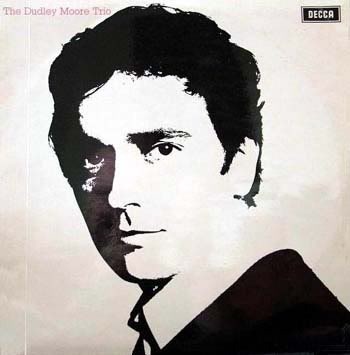
For the past two years, I have been looking high and low for an album by the Dudley Moore Trio, which I thought, perhaps this record doesn’t exist. I was never a huge fan of his films he made in Hollywood, but I did see some footage of him and Peter Cook together, and that got me interested in his music. I have been told that he was a serious musician and jazz composer. Yet when I went to a record store, I could never find his music! I started to suspect that perhaps this was an imaginary or fictional aspect of the Moore narrative. Or maybe it was a part he played in a film or TV show, and people just presumed that he was also a talented musician? Today, someone sent me an actual copy of one of his early albums, and presto, he is a musician and a damn good one at that! So he does exist in that role, and I was wrong about him not playing music.
Identity confusion is very much part of my personal make-up. It is one reason why I don’t participate in national or local politics, because I can’t trust my judgement, when it comes to voting for someone or not. I’m totally swayed by a commercial and I’m often proven wrong by me being so gullible.
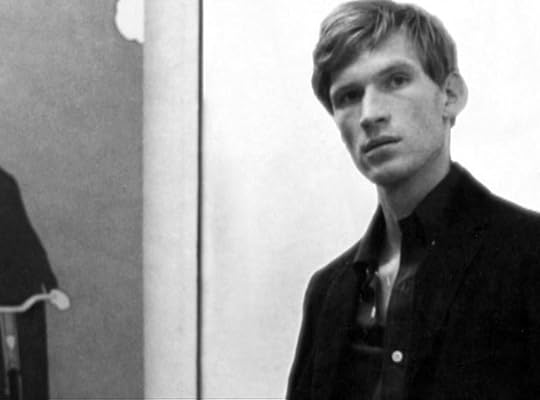
Funny, but the one thing I have seen that cuts through the idea of illusion for me is Bas Jan Ader’s conceptual piece “Broken Fall (geometric).” Here in stark black and white, you see the artist trying to fall on a little stand somewhere in a rural area of Holland. Unless you’re a professional stuntman, it is very difficult to actually fall down on purpose. Here I see Jan Ader struggling with the idea of falling, but of course, he stops himself, because it is natural to do so. Finally he does topple over, and watching this short film makes me feel emotional, but not only that, but I also feel I am watching something that is very real. The thing is I have to basically trust what is in front of me, and allow myself to be driven to another landscape - whatever that is real or not is just something I have to cope with on a regular basis.
Published on April 19, 2014 10:19
April 18, 2014
April 18, 2014

April 18, 2014
I have only been to Catalina Island once, and I was seven years old at the time. My grandfather’s immediate family lived on the island and we visited them over the weekend. It was my mom and grandmother, and I have no memory of Granddad or father there. We arrived there on a sea plane. That mode of transportation was both scary and unique, because it may have been the first time I have ever been on a plane. Landing on water was something out of the cinema; it felt it should have been on a huge movie screen instead of my little un-important life. I have experienced beach life, especially Santa Monica beach, but the Catalina shore felt differently for some reason. Mostly due that the ocean water was very clear, and I never experienced the ocean that way. My understanding now is that the water is very polluted owing to the sewer system on the island, but in 1961, I remember being transfixed on the image of my toes as I walked into the ocean.
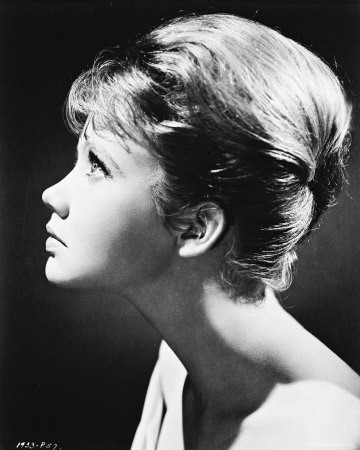
It was there that I ‘think’ I fell in love. Her name is Hayley Mills, and I went to see “The Parent Trap” at the Avalon Theater. It appeared to me to be a lighter version of the Chinese Theater on Hollywood bouvelard. Here the theater was even bigger, and it shared the aesthetic of the island at the time, which was art deco reliefs throughout the movie palace. And it was a palace to me, because it was huge and decorated so beautifully. With such perfect surroundings, of course I fell in love with Hayley. Not only, that, but she had two roles in the film, she played a pair of identical twin sisters. Sitting there, I was overwhelmed with her image on the screen and in the theatrical setting of the actual location of the theater itself. The combination of her beauty matching the elegance of the theater was hard for me to make a distinction between a woman's beauty and a beautiful building. I often think of a woman's beauty as being a type of architecture.

Once I got home I remember purchasing a Haley Mills fan magazine. Such publications were very common at the time. It had numerous photographs of her, and I spent that afternoon cutting the images out of the magazine and putting it up on my wall in Beverly Glen. I had a certain amount of attraction for the girls in my class, but Hayley Mills was something bigger than that. It is like those girls I knew, but projected into another dimension. It was around this time that I saw “Whistle Down The Wind, ” a black and white film, which made it totally different from the technicolor images of “The Parent Trap.” In other words, this film was a projection of one’s nightmare compared to the sunlight world of the Disney film. This became even more of an obsession for me, due that it was the story of a young girl who finds a fugitive in a barn, thinking he was Jesus Christ. He wasn’t of course, just a man running from the law, but he allowed her and the other children to believe that he was Christ. I loved the idea of the time that a gang of children are keeping a secret from the outside world. It made my world more powerful, and by seeing this film, I felt I was sharing a common secret.
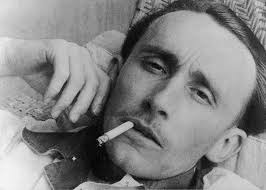
As a teenager I started reading the works of the French film theorist André Bazin, and I was very taken by his thoughts on cinema criticism should be written by the critic who liked the film he or she is writing about. I totally concur with this manner of thinking, because “The Parent Trap” may not be a great film, but to me, it was a significant work that somehow shaped my childhood. The same goes for “Whistle Down The Wind, ” a work that was perfectly natural and logical for a love-struck pre-teen like me.
Published on April 18, 2014 10:29
April 17, 2014
April 17, 2014

April 17, 2014
I can never fully understand why Bob Dylan is always regarded as the greatest songwriter alive, when there is someone like Pete Shelley who is obviously a much better melody maker as well as a lyricist. I first heard the Buzzcocks when I was close to 20, which was at the height of the punk era. I purchased the 7” EP “Sprial Scratch” at the day of its release. I think at Bomp records in the San Fernando Valley. The combination of Howard Devoto’s lyrics and Shelley’s music hit me hard. After Devoto quit the band, I thought that was it for the Buzzcocks, but alas, I was totally wrong. “Another Music in a Different Kitchen” their first full album was an amazing piece of work that made my head spin and my heartbeat go faster. Over the years, including his incredible solo albums, I noticed that Shelley writes at least two types of songs - one is the pretty melody done fast and hard, and the second, which is my favorite by the way, is the song that if you did a painting of it, the shape would be a circle. They are zen captured as a pop song. Songs like “Autonomy,” “Why Can’t I Touch It?,” “I Don’t Know What To Do With My Life,” “Noise Annoys,” “ESP,” and the incredible “I Believe” convey not an answer, but if you ask the question over and over again you may get some sort of peace. Shelley is screaming out over and over “There’s no love in this world anymore, ” has such an effect on my life.
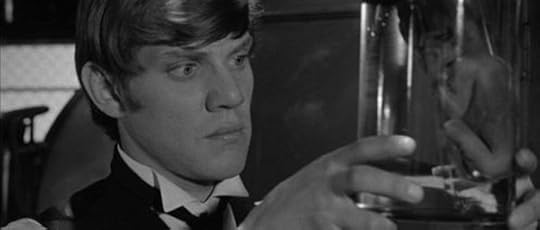
That sense of anger in his songs liberated me on a huge level. The only other time I felt that way was when I first saw Lindsay Anderson’s “If…”, a film that ignited my soul, that I finally realized I wasn’t alone in the world. That film opened at the height of my time at Parkman Junior High School, which to me was just like being condemned in a concentration camp. It is one thing to get bullied by a fellow student, but to be bullied by your teachers I think is a total sin, if such a thing exists. The fact that I was taken to the main office of the gym teachers, and called a ‘fag’ over and over again, strikes me as not a nice thing to do with a 14 years old boy. I wasn’t aware of the “what” or “why” when they march me to the shower and then made me to take off all my clothes and take a shower, and then afterwards they told me to do it again, and this time get my hair wet. I didn’t do it the first time, due that I had long hair, and it took forever to dry. I was, and still am, very vain with respect to my appearance. It seemed to me that Anderson captured the whole school experience for me, and I couldn’t believe someone captured that and I can see it on the big screen. The final scene where the students go up on the roof and shoot down the teachers and fellow students made my heart warm. It was at that moment where I decided I will not be impacted by these people anymore.
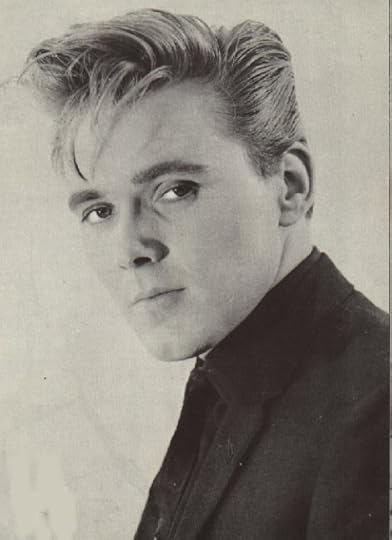
Of course, this set me down the path to find the artist that I feel is not respected by the masses, which ironically enough, are the reason why I would like an artist. Billy Fury, like Shelley and Anderson, represent a harsh world upon a sensitive soul, and therefore I become a huge fan of that person. When I first heard Billy Fury’s “Don’t Jump, Billy, ” it also was like a moment that lasted forever, even though the song was only a few minutes long. The beautiful image of the song for me is imagining Fury on the edge of a mountain cliff, and down below are the rocks and sea. Splattered on the rocks, yet the sea will carry his remains to another world. Yet the chorus in the song behind him pleads “Billy don’t jump.” That and the songs by Pete Shelley are probably the most moving works of art for me. “If…, suggested a better world within a horror show, and it was at that moment that I realized I didn’t need a gun or a weapon. My pen on paper is the perfect weapon for me.
Published on April 17, 2014 11:45
April 16, 2014
April 16, 2014
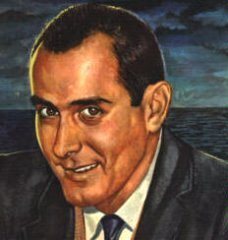
April 16, 2014
When I wake up in the morning, the first thing I put on my turntable is “The Versatile Henry Mancini, ” specifically the opening track “Poinciana.” The lines you hear in this mostly instrumental song is “Speak to me my love.” In fact, I believe that it is the only lyrics in the song. Nevertheless it serves as a meditation for me, before I have my first cup of coffee, as I get ready to go to the downtown library on Fifth street and flower. I’m off today to research a writer by the name of Samy Rosenstock, a Romanian poet of some note, who to this day, has a strong influence on my writing. It is very hard to locate his books in English, but I first discovered him as a teenager, when I was desperately looking for a mentor or an influence for my own attempts at writing poetry.

He was the first one to actually do the cut-up writing, where one takes a newspaper and cut out words, and then throw them into a hat, shake it up, and then toss them on a table or floor. You then see what sentences come out, and bingo, you have almost an instant poem. William S. Burroughs is famous for this process and many think he was the first to present it, but alas, it was Rosenstock that came up with it first, sometime after World War 1. Everyone from the great lettrist writer Gil. J. Wolman to David Bowie has used this process of putting together a poem. My technique is similar, but I do this in my head. I sort of have a pictorial memory of an article, and it seems as though it is right in front of me. I choose the words or even half-a-sentence, and I go from there.

Chance is a big part of the process. I am without a doubt attracted to artists and writers who use ‘chance’ as a tool of sorts. Merce Cunningham strikes me as an artist, who can work with others, but there is a deep collaboration between the music, his dance steps, and how that is processed to a live audience. Writing to me is a performance as well. As you all know by now, I have committed myself to writing a piece for everyday this year (2014). To do so, is very much an act of meditation, chance, and using Rosentock’s method of writing poetry. Spike Milligan is a comic writer and performer who I admire greatly, and he too, uses improvisation in his art where one is not sure where it will go. The act of heading towards failure is almost drugged like paradise, and I feel the need to rush to its entrance and work my way out towards the exit.
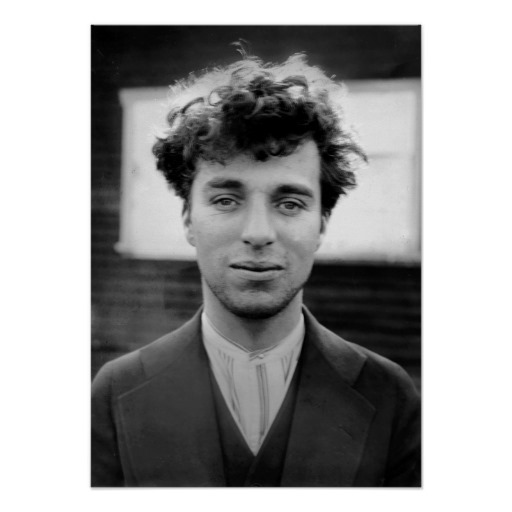
Charlie Chaplin’s best work for me is not his final films, but the clips I see of him working out his gags, and often failing, and then you see him getting frustrated and losing his temper. That to me, is an inspirational moment for me, to see such a control freak in the moments of utter despair! Also the fact he filmed everything as he worked on the skits, or trying out new things. “City Lights” and “The Great Dictator” are wonderful films, but his outtakes are even much better. To see the artist work behind the curtain, is truly wonderful. The magic is exposed, and people like Chaplin and Milligan are seen working without a net underneath them is thrilling to me. I feel the same way regarding Rosentock’s methods of writing poetry.

So it is odd that when I try to relax, it is with someone like Mancini, Ray Ventura, or Dusty Springfield: artists who only show perfection. Like the yin and yang, I bounce back between the two forces, and here I find myself in the library, in a cubicle, a prisoner of sorts to my private demons.
Published on April 16, 2014 10:59
April 15, 2014
April 15, 2014

April 15, 2014
Basically it has been all downhill since Abraham Lincoln died. Some declare that it was the John F. Kennedy assassination, but for me, it’s Lincoln’s death that has caused me a great deal of depression and regret. Which is strange, because surely I wasn’t even alive when Lincoln died, but still, sentiment is sentiment and it’s hard to lose that feeling of disappointment. Friends (the few I have) have commented that I’m such a sad boy, but in actuality I do find enjoyment in the little things in life, for instance I think back to my first real love, Lita.
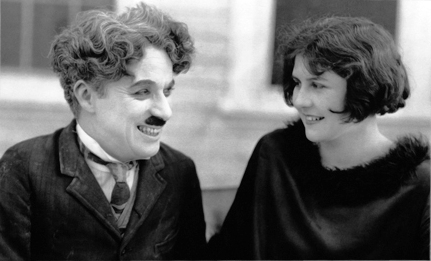
We were briefly married, but it didn’t last long. Mostly due that we didn’t share any interests, besides the sex. When I married her, I was 35, and she was 16. It caused a scandal at the time within our social world, but in my point of view, love is love, and it is really no one else’s business besides ours. But alas, in our world, we don’t maintain on love alone. When I first met her she was employed in the May Company make-up counter, and at the time, I was very much into the new romantic look, so I would shop for my make-up there. The look I was going for was the Charlie Chaplin’s ‘Tramp’ look. I didn’t have the mustache, but I did purchase this old suit and I carried a walking stick with me at all times. When I walked around the make-up section, I felt like Alex from “A Clockwork Orange, ” with my cane resting on my shoulders as I peacefully paced around the area.
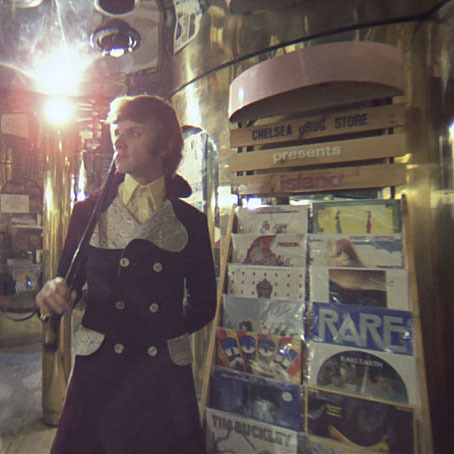
Lita showed me eye make-up, and when she got around the counter to my side of the world, I felt a charge when she applied the eye liner around my eyes. I grabbed her hand and then asked her if she would go on a date with me. She said yes, and I swear to God, I didn’t know her age at the time. Her ability to wear make-up totally made her look older than her actual age, but still, my history shows that this is not the case.
I have not previously been comfortable with women within my age bracket. I’m not sure why? I think it may have to do with the way young people look at the world. Some are sad, and most naively so. But for me the depression at my age is quite crippling, and this is one of the reasons why I was attracted to the presence of men wearing make-up. I wanted to disguise my aging, or at the very least, have the ability to laugh at the cruelty of the aging process. In my twenties, I never even thought about it, but once I reached thirty, it became a huge concern of mine. Younger girls always were attracted to me, and it may be due to my interest in their culture. But who knows? I never seriously considered ‘why’ they would be interested in me. I was only grateful that I got the attention that I desperately needed.

When we got married in Mexico I was concerned what her parents would think, but it seemed at the time that my new bride could care less what they thought, and that made me happy at that specific time. Nevertheless, time caught up with us, and we realize that perhaps the marriage was a mistake. I remember taking her to the Egptian theater to see Chaplin’s “Gold Rush, ” which by the way, has always been a favorite of mine. Since childhood, when I saw this film on a morning TV show, I developed a crush on his leading lady at the time. It never left me that feeling, and it was after the screening that I told Lita that it is perhaps best for us to obtain a divorce.
As I sit down trying to work on a book about Lincoln, I am thinking back about our marriage, which surprises me that I don’t even have a photograph of Lita or any of the possessions that we or I owned at the time. I gave her everything, and once the papers were signed I never saw her again. As with the make-up, I still add a little rouge here and there, and in the night, once in bed, I do think of my health, or lack of it, as time marches on.
Published on April 15, 2014 12:08
April 14, 2014
April 14, 2014
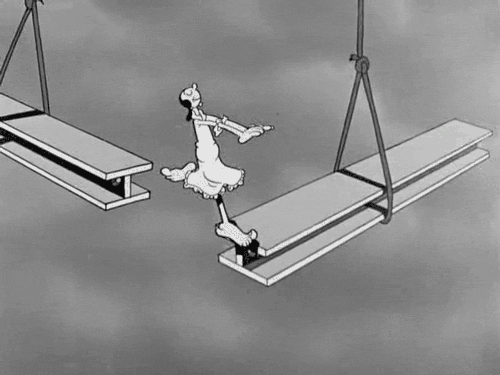
April 14, 2014
I haven’t mentioned this to anyone, but it seems I’m a sleepwalker. For the past two years, and this happens maybe twice a year, so we’re talking about at least four times, I found myself getting out of bed sometime in the dead of night, and walking down my hill to Astro diner on Fletcher where it meets Glendale boulevard. I have no memory of this, but I did talk to people who had witnessed me in this state.

It seems I do the same thing all the time. I either go into the counter and sit, with a daze look over my eyes, or even worst, I tend to sit down at a booth when it is either full of people, or just two people in the area. I have been made aware that I always go to the same seat. One time at the counter, I was trying to sit on a seat that is already occupied by a customer. It seemed that I was trying to sit on his lap. Or if it is in a booth, I basically sat down and pushed the other person aside. Either way one looks at this, I tend to go into a booth that is full of police officers from the K9 unit. Not once have they woke me up, and they just usually contact the management there. The odd thing is I never woke up. The waitress who works at Astro, knows me slightly and she also knows where I live. The only saving grace is that my wife notices when I’m gone, and comes after me to take me home. She then directs me back to bed, and then I sleep normally. By morning, when I woke up, I have no memory of the previous night walk.
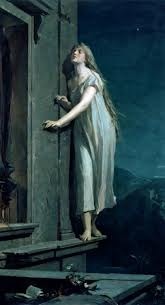
Freud once commented that sleepwalking is fulfilling sexual wishes or at the very least, a desire to go to sleep in the same area as the individual slept in childhood. As far as I know, I never slept at Astro’s diner as a child, and my first visit there was as a teenager. But alas, that’s not true! My mom told me yesterday that we as a family used to go to Astro’s a lot, and mostly in the late evening. As a child, I would always fall asleep there after eating an apple pie and then laid my head on my mom’s lap. My mom indicated to me that it was a real pain to wake me up from my nap at Astro’s, that they finally decided that maybe it isn’t a great idea to take me there in the late evening. Nevertheless, I have no memory of any of this. What my memory tells me is that I went there as a teenager, and I had for sure had a strong crush on one of the waitresses there. She was much older than me, and there wasn’t a chance in hell, that I could get anywhere near her, except to order another cup of coffee. But going there as a teen for the purpose of seeing her, did cause me a sense of dread, anxiety, and excitement all in one package.
Of course she doesn’t work there anymore, and I (in my waking hours) go there maybe once a month for a Sunday breakfast, but still, that sense of disappointment has stayed with me for many years. In fact, it is so disturbing to me that I try not to think about it.
Published on April 14, 2014 10:34
April 13, 2014
April 13, 2014

April 13, 2014
Being an only child and surrounded by childhood friends who either had a brother or sister, left me with fantasies of being part of other families. Oddly enough, I never fantasize about the families that I knew, but more with the families I have seen on TV at the time. I was drawn into “Leave It To Beaver” at an early age, and the show which ran from 1957 to 1963, was about a middle-class white family somewhere in the United States (not Southern California, that’s for sure) where the parents had two sons. The youngest son was Beaver, who had a child-like curiosity about the world, and therefore I identified with him, because of his struggle to comprehend his world and the emotional landscape that his parents live in. The other son is Wally, who is someone I would want as a big brother.

I have been caught many times by my parents when I talked to my imaginary brother Wally. At first they thought it was either charming or cute, but my discussions with the empty space near me, got stranger and stranger to them. I, on the other hand, was quite comfortable with my relationship with Wally. As I grew older, many things changed in my life, but never my bond with Wally. I often ask him for advice, and for years I had a scrapbook that just focusses on the images of Wally, who was played by Tony Dow. At first I pretended that it was a family photo scrapbook. The illusion became reality as I got older.

When I was in my early 20’s, and by chance, I met the famous French psychoanalyst Jacques Lacan, who was a friend of Andre Breton and the Surrealists. In his later years, he was collecting photograph prints, and he contacted me because he had heard that I had a large collection of images by Pierre Molinier, who was known for his erotic self-portraits of himself either dressed as a woman or posing with prosthetic limbs, stiletto heels, dildos and an occasional confidante. On one of my trips to Paris, I asked if I could bring up a delicate matter to his attention. He listened to me as I talked about my obsession with my invisible older brother Wally. At one session, we watched together at least five episodes of “Leave It To Beaver.” He was fascinated that I actually based my imaginary brother on a popular TV show. Not only that, but a show that focuses on what looks like a “normal” American family. He knew I had an interest in writing and he asked me who I like as a writer. I told him that my two favorite writers are Georges Bataille and Samuel Beckett. I didn’t know at the time that he married Bataille’s wife, and was actually a good friend of the writer as well. He was proposed that maybe I should write a narrative with me and “Wally” as the main characters, but base it on a prose style by Beckett.

For the past thirty years, I have worked on one long piece, which I guess is a novel, about me and Wally going on a trip to France to locate images by Pierre Molinier. The dialogue between us, is very much based on Beckett’s “Waiting for Godot,” as we wait in a train station for Molinier to pick us up for some unknown destination. This is where the problem lies, because I don’t have the foggiest idea where that destination will lead us, but I feel that my brother need to hold my hand and direct me to the light, from the darkness of my mind.
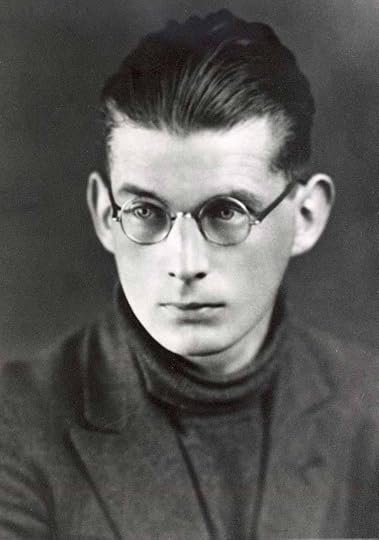
Published on April 13, 2014 09:26
April 12, 2014
April 12, 2014
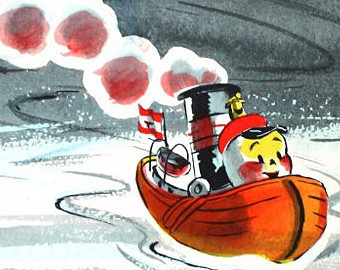
April 12, 2014
I often just think about my life as “Little Toot, ” the tugboat child who all the other tug boats feel is useless because he (I presume it’s a he for some reason) prefers to play and make figure 8s in the bay. Eventually the tugboat community forces Little Toot to leave and finds himself adrift in the vast sea. I imagine myself in that role quite easily. At one time I was working at a bookstore, having a great time there, and eventually let go, due that I love being around books, and I just wanted to play, which actually, in my point of view, was my actual work there. Nevertheless, some disagree with my philosophy, and I was sent out adrift in the world of my own imagination.
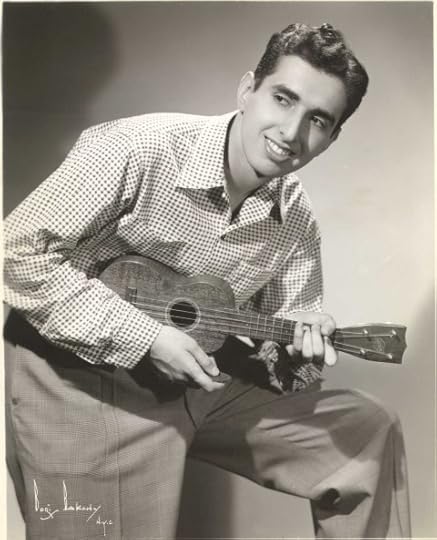
As a teenager, I briefly met the entertainer and singer Tiny Tim at a party at Billy Gray’s house in Topanga Canyon. I was taken aback to meet him, because I wasn’t sure if he actually exists or not. At the time he was a star for being on “Laugh-In, ” but also was taken as a joke, due to his appearance and his rather eccentric mode of focusing on songs from the 1920s and beyond. Also the fact that he played the ukulele and sang with a falsetto/vibrato voice. He wore white make-up, red lipstick, and had long hair. Tiny Tim sort of look like he was borderline homeless or even insane. So many thought he was likely to be a comedian and he was taking the Tiny Tim character as a fictional role. To be honest, I was confused at the time. When I met and observe him at this gathering, I can see he was genuine and not at all, a character that was set up for the masses. At the time, I purchased his first album “God Bless Tiny Tim, ” and recalled that I really liked it, and for sure it wasn’t a joke thing at all. Very recently I learned that he was also in Jack Smith’s “Normal Love.” Like Little Toot, Tiny Tim wasn’t really accepted by his audience, because he was thought as a freak or a humorous figure. In fact, he was a genuine musical archivist and more likely one of the great minds in 20th music. Yet, I feel he was abandoned by the entertainment world, once they thought the joke was old.
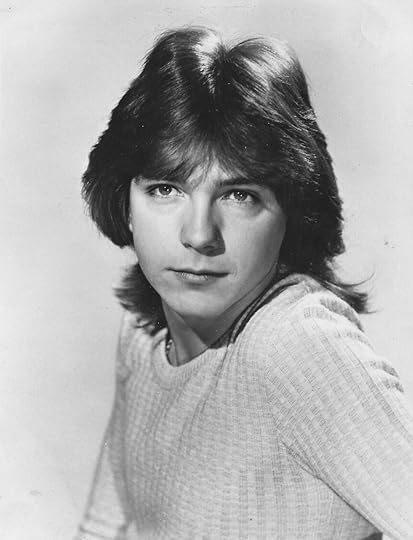
It’s very hard to stay true to one’s self, when the world either ignores or ridicules you in a fashion that yells out ‘you’re not important.’ Yet, on a daily basis, the struggle to work or play is almost like sending a spit against the wind, it hits you in the face again and again. We are often placed in a world that is none of our making, and yet, everyone demands that we operate in that landscape, and do what we are told. I remember reading about the teen idol David Cassidy and his frustration to be taken seriously, yet, his image, even his peculiar fame, worked against him. The crisis is trying to define oneself against what the others say you are. With that in mind, whenever I put pen onto paper, it is a weapon against those who wouldn’t allow me to flourish in my own fashion. Nevertheless, if you keep your vision intact, there is nothing that they can do in order to destroy you. And yes, you drift in that vast ocean, but also there are endless possibilities where one can even visualize an Atlantis in front of them.
Published on April 12, 2014 11:28
April 11, 2014
April 11, 2014

April 11, 2014
Like Marcel Proust commenting on the cookie that brought up memories, the Sony transistor radio serves the same role in my life. It was probably the first real serious object that I owned. I haven’t the foggiest idea what the radio originally cost, but it was a magical entrance to another world. As I was going through my storage boxes I ran across the radio, and I couldn’t believe I still had it. For me, the first time I seriously listened to music was on this hand held machine. The sound or the reception was never perfect, but it somehow added a sense of magic to the process. There is what you heard when you see musicians play live, and then there is music you hear in a recording studio, and then of course on the turntable, where we had one huge speaker - mono only in the mid 1960s. But the transistor radio had its own sound, which was tinny, and of course thinking of it now, it would be really annoying to listen to music that way. But alas, my earliest impression of contemporary music that I liked, was on the transistor radio. Also it was the first medium or tool for me to use that separate me from my parent’s taste. Otherwise, I would get my music from my parents record collection and turntable. My radio allowed me to wander into another world, where only I, can decide what to hear and when to hear it.

The two radio stations that were important to me were KHJ and KRLA. The latter was actually more important to me because it appeared to be more Beatle related than KHJ. That was likely to be an illusion on my part, but also the radio station had a newspaper called KRLA Beat, that was sort of like Rolling Stone for the teenage mind. It was in this publication where I first started reading about music or I should say rock an’ roll stars as they were happening at that time. KHJ was more personable due to it's DJ, specifically the Real Don Steele.
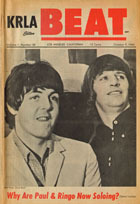
When I was close to 11 or 12, I went camping on the beach, which was a total horror show for me. I can never understand the allure of nature for people. It is like they actually prefer dirt than a nice clean lighted place. The point of time when the hot afternoon turns into a bitter cold evening is disgusting to me. I remember spending most of the time in the tent that we brought with us. Even that, the temperature was just so hot, but still, I didn’t want to be outside. So I put up with the heat to read the comic books that I brought with me to fight off the boredom of sand, blue sky, and ocean. The transistor radio brought a sense of relief for me, because I used it as an object to block out the noise on the beach. But what was really beautiful to me was playing the radio in the night, and I often would go off by myself near the ocean to sit on the cold sand. I put the radio by my ear and it was like getting messages from another world. I couldn’t imagine life without that radio.

Also the use of my imagination kept me alert during our beach holidays. I imagine myself as Boy, the son of Tarzan. Often I would imagine that my dad was the King of the Jungle, instead of Johnny Weissmuller. I would have these elaborate narratives running through my head that I saved my dad and Jane (actually my mom) from some horrible circumstances that went beyond their control. Those fantasies came with the soundtrack that was on the radio, and I remember actually listening to a program called “The Shadow” while on the beach as well. Hearing a show like that was very mysterious and a tad scary -especially in the nighttime on the beach.
Ironically I played “Boy” to Taylor Mead’s Tarzan in an Andy Warhol film, but that’s another narrative. Nevertheless I am always thankful for Sony for bringing the magic of another world to me.
Published on April 11, 2014 10:19



